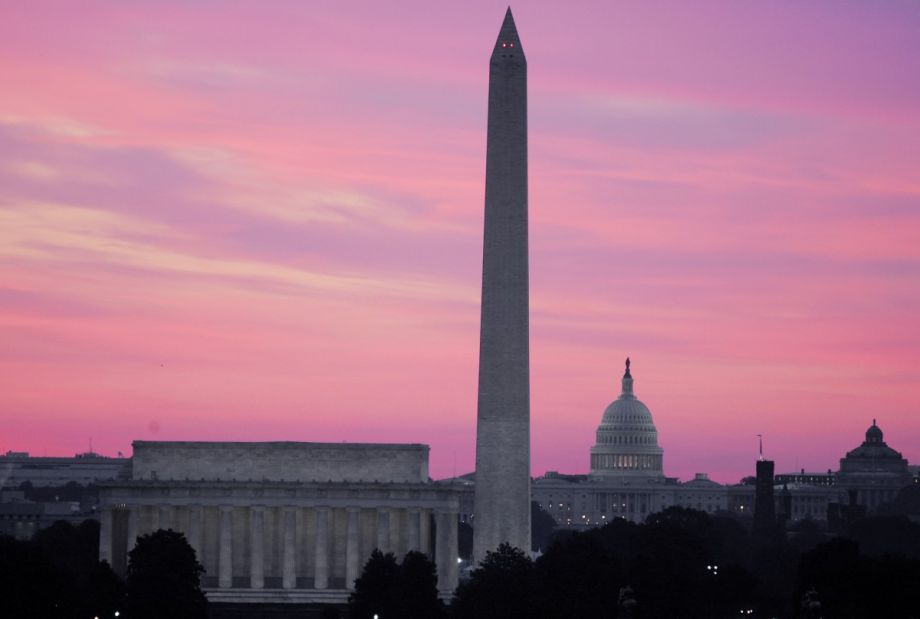For a brief moment in time nearly 30 years before the American Civil War, black residents in Washington, D.C., who’d been freed from slavery had to pay the local government a $1,000 bond to secure their freedom. They also had to collect signatures from five white witnesses to guarantee their entry into the citizenry.
And for the few that could afford the cost of freedom — $1,000 back then would amount to about $33,000 today, an incredible price tag for a population that had negative economic worth — the only jobs freed slaves could legally hold were as carriage or cart drivers.
The tendencies of slavery-era U.S., and the decades thereafter of policies and practices that kept black populations out of practically every social and economic dialogue at the metropolitan level, are put beneath the spotlight in a new report that focuses on the way wealth is divided by race in Washington, D.C.
It’s called “The Color of Wealth in the Nation’s Capital,” and it’s part three of a series of six reports that will be funded by the Ford Foundation and carried out by organizations like Duke University, the Urban Institute, the Insight Center for Community Economic Development, The New School and others. (Next City receives funding from the Ford Foundation.) The first two reports focused on Los Angeles and Boston with the same intent: revealing how minority residents in these cities are struggling to make ends meet because of the color of their skin.
The report touches on homeownership in D.C., noting that black-owned houses are typically valued at two-thirds the price of white and Latino-owned households, at $250,000. It also touches on liquid assets, with black households averaging $2,100 in immediately available funds if pressed by an emergency, while whites averaged $65,000.
When education gets taken into consideration, disparities are still well-defined. White families in D.C. headed by someone with a college degree have an average net worth of $258,000, while black families headed by someone with a bachelor’s degree have a net worth of negative $19,000 on average.
But Kilolo Kijakazi, a fellow at the Urban Institute and one of the principal authors of the report, says she thinks one of the most valuable assets in “The Color of Wealth” is the time it spends on helping audiences understand the historical contexts behind why wealth continues to tilt away from minority communities.
“There is often a tendency to attribute this wealth gap to individual characteristics, some deficit in the individual or some character flaw — that folks who don’t have net worth don’t know how to save,” says Kijakazi. “When in fact it is the structural barriers that have been in place over centuries that have led some people to be in the position where they are.”
For example, white populations fled D.C. to surrounding suburbs between the 1930s and 1950s, lured by favorable taxes and higher-quality schools, while black populations were confined to the city’s urban core by local and federal practices that directly and indirectly barred them from entering the real estate market.
The passage of the Home Owners Loan Act in 1933, for example, brought with it a series of city surveys that graded neighborhoods based on homeownership rates, housing conditions, and the crime and “desirability” of their communities. That grading process is now known as redlining, and it cemented the long-term neglect of majority black neighborhoods by labeling them as risky investments to the real estate community.
Meanwhile, white populations were lured out of the city by federally backed suburbs like Greenbelt in Prince George’s County, a cooperative community heralded by first lady Eleanor Roosevelt as a sort of utopia, that were intended to ease the housing shortage in the metropolitan area surrounding the nation’s capital. Black people, however, weren’t allowed to live there until nearly 30 years later. They were also barred from purchasing foreclosed homes that were previously owned by white families.
This whole chunk of the mid-century saw D.C.’s white population drop to 33 percent while the black population grew to 47 percent, as the legacy of slavery bled into the legacy of exclusionary real estate practices that atrophied black communities’ economic resilience to the point where they’re still recovering today.
To Kijakazi, who lived in Washington, D.C., between 1978 and 2003, there’s this idea she comes across that people who live in the capital are better off on the whole; it is, after all, one of the most expensive cities to live in in the United States.
But being able to afford to live there doesn’t exclude you from the harm these past policies are still inflicting on minority populations, she says.
“The situation is very tenuous for many people regardless of their current income level, regardless of their education level,” she says. “What they’re able to accumulate by wealth is very different by race, and country of origin, and ethnicity.”
The report series doesn’t only address the divide between white and black communities, but also takes into account Latinos, Asians, and the diaspora from Africa and other countries that have since relocated to the United States. But in D.C., which was recently known as the “Chocolate City” because black residents made up nearly 71 percent of the population in the early 1970s, black communities played a larger role in the city’s creation and development over the past few centuries than other minorities have.
Going forward, the report suggests a few incentives that could help celebrate that role by reinvesting back into these communities not only in D.C. but across the U.S. One is through a process of “baby bonds,” or trust funds created with the birth of a new child that the federal government would invest an amount in that’s commensurate with the family’s net worth.
“Ideally,” the report notes, “every American newborn would be endowed with an average account of $20,000 that gradationally rises to $60,000 for babies born into the lowest-wealth families.” While that sounds like these funds would write up a massive check for taxpayers, the report also notes that “with approximately four million infants born each year, and an average endowment around $20,000, the estimated program cost would be $80 billion … this would have constituted only 2.2 percent of 2012 federal expenditures.”
Another suggestion is to mandate employment as a “guaranteed right” of each U.S. citizen, and invest federal funds into communities that are still struggling with legacies of disinvestment by “employing those communities to improve their own quality of life.” Jobs would include “cleaning and replacing broken windows, filling potholes, clearing, building affordable housing without displacing residents, and caring for the elderly and for the children of working parents.”
Kijakazi hopes the report will inspire outcomes like these — or at the very least, add to the paradigm shift among public understanding that economically struggling communities in the nation’s capital didn’t decide to be that way.
“I hope it paints a picture for people how the wealth gap was developed, what happened to people, and why people are situation as they’re situated now, because then my hope is that that leads to effective solutions,” she says. “Not ones that just act as if, or are predicated upon a belief that, all we need to do is teach them how to save and the racial wealth gap will go away.”
The Equity Factor is made possible with the support of the Surdna Foundation.

Johnny Magdaleno is a journalist, writer and photographer. His writing and photographs have been published by The Guardian, Al Jazeera, NPR, Newsweek, VICE News, the Huffington Post, the Christian Science Monitor and others. He was the 2016-2017 equitable cities fellow at Next City.





_600_350_80_s_c1.jpg)











